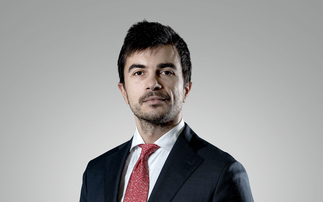
Partner Content - Mirabaud Asset Management sponsor of the recent Channel Island event. Al Cattermole gives an overview of the Mirabaud Global Strategic Bond.
Can you give a brief overview of your strategy in terms of what you are trying to achieve for investors, your investment process and the make-up of the investment team?
Mirabaud Global Strategic Bond is an ‘all-weather, go anywhere' core fixed income strategy designed to capture market upside while limiting market downside to deliver long-term attractive returns.
We dynamically invest across the vast fixed income universe, adjusting positioning to optimise returns in different investment and economic landscapes. As the strategy is benchmark agnostic and highly flexible, we are not tied to a single sub-asset class. This allows us to pursue our best ideas across government bonds, investment grade corporates, high yield bonds and emerging market debt.
We have an active policy of hedging both duration and credit risk when appropriate to mitigate volatility and protect the downside. This element is now more important than ever, given today's investment landscape of continued economic and geopolitical uncertainty.
Our top-down view is shaped by our monthly global macro meeting, which allows us to identify where we want to allocate from a regional perspective and guides us on duration and credit positioning. We then populate this macro view via bottom-up analysis, and each bond earns its place. ESG factors are fully integrated with traditional financial analysis, incorporating negative and positive exclusions as well as active engagement. The strategy has an SFDR Article 8 rating.
The strategy is managed by Andrew Lake, Fatima Luis and Al Cattermole, with analytical support from the wider Fixed Income team, as well as our dedicated SRI team.
How are you currently positioning your portfolio?
We're blending credit and duration – focusing on high-coupon, long-duration investment grade (IG), enhanced with select high-quality high yield (HY) exposures. This balances the narrative shifts between potential soft landing and recession scenarios. Short-term volatility is then managed via credit and interest-rate hedges.
We believe the outlook for IG is appealing whether we ultimately face a soft landing or recession scenario. Overall IG yields are high with a c.100bps spread over US Treasuries, providing extra carry and compression in the event of a soft landing. The real benefit of this part of the portfolio is the protection in the recession scenario, where wider spreads should be more than compensated for by lower underlying government rates leading to significant positive returns.
For the more central case of a soft landing, then we believe high-quality high yield should outperform, as the new higher coupons more than compensate for the risk of default. We look for large, well-run companies, with good access to bond markets and the flexibility to navigate a rapidly changing macro outlook. We currently have around a 28% exposure in the strategy and are increasing that as the data moves away from a hard-landing narrative.
Can you identify a couple of key investment opportunities for your fund you are playing at the moment in the portfolio? This could be at a stock, sector or thematic level.
The two key themes we are playing are US high yield and European duration to reflect the diverging outlooks for the two regions. European growth is expected to be much lower than in the US. German manufacturing and autos, in particular, are struggling to improve and are suffering from a Chinese hangover as exports fall. To us, this makes it more likely that the European Central Bank will choose to cut rates faster than the market is currently pricing in, so government bonds and higher-quality investment grade credit should outperform European high yield.
On the US side of the coin, GDP forecasts appear too low vs. the incoming data, the US consumer remains very resilient in all but the very lowest segments, and the potential for fiscal stimulus, or a release of pent-up demand once we clear the uncertainty of the US election, favours lower-quality credit. Therefore, we expect outperformance of credit over rates and compression in US high yield to investment grade. We have been adding BB and B credit – subject to our bottom-up analysis on each company.
Al Cattermole, Fixed Income Portfolio Manager, Mirabaud Asset Management











